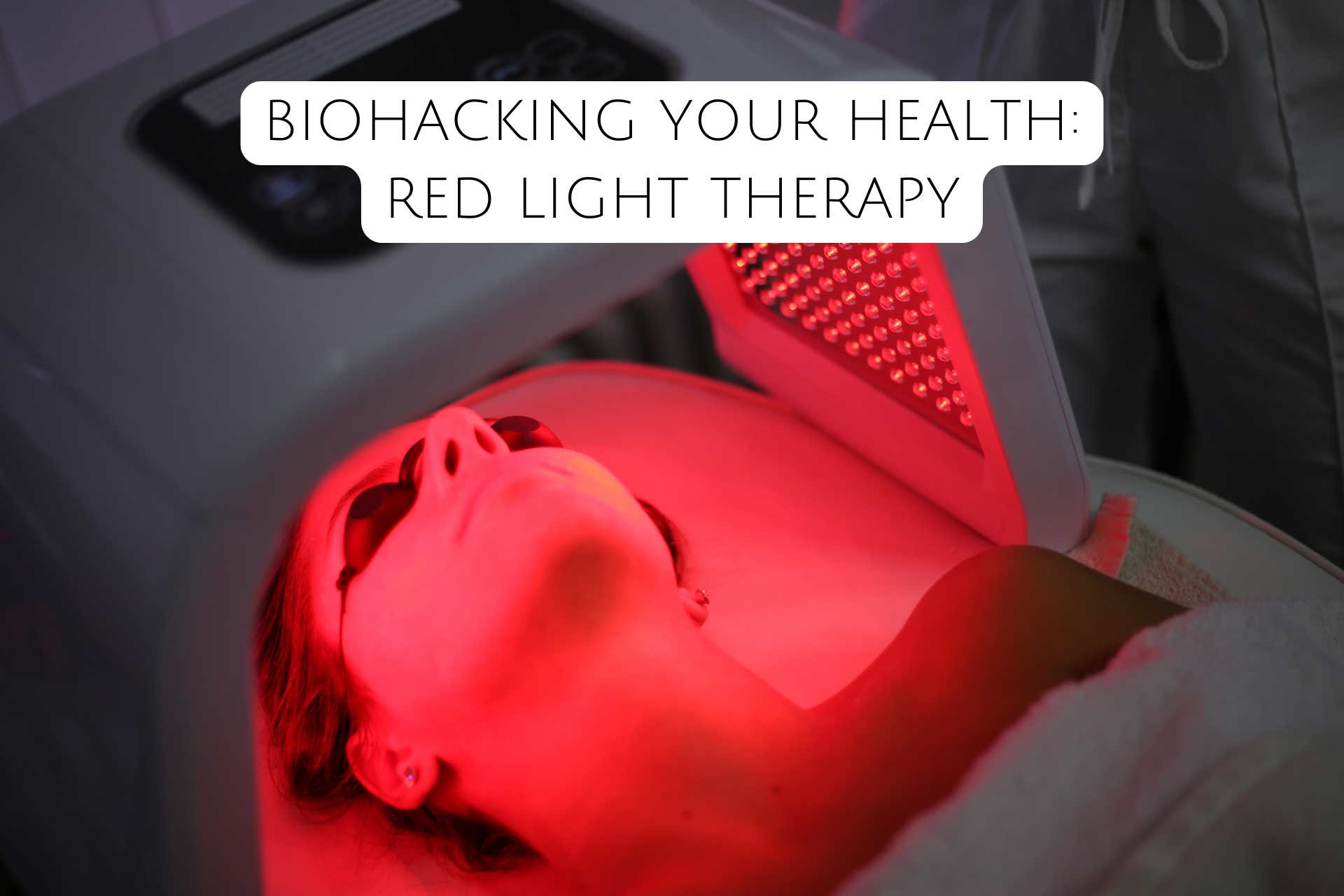Innovative Biohacking Therapies for Different Body Systems
Biohacking your body can be done in many ways. One of the many ways is therapies, it includes many treatments and practices to improve your overall well-being. These therapies scope from typical medical treatments to different practices that support wellness and improve body metabolism. Here’s a overview of how you can biohack your body with different therapies:
BIOHACKING YOUR CIRCULATORY SYSTEM: CRYOTHERAPY

Cryotherapy is a biohacking method that includes quick interaction to highly cold temperatures to improve overall well-being. This method is believed to have various benefits for the circulatory system and overall health. Here's an detailed information of cryotherapy and its potential benefits :
How Cryotherapy Works:
Cold Exposure: Cryotherapy typically involves standing in a cryotherapy chamber or using localized cryotherapy devices that apply cold air or ice to specific areas of the body.
Vasoconstriction and Vasodilation: Exposure to cold temperatures causes vasoconstriction, where blood vessels narrow to conserve heat. Once the body warms up after cryotherapy, vasodilation occurs, leading to increased blood flow to the extremities.
Potential Benefits for the Circulatory System:
Improved Blood Circulation: The alternating vasoconstriction and vasodilation induced by cryotherapy can help improve blood circulation throughout the body. This may benefit cardiovascular health by reducing the risk of hypertension and improving endothelial function.
Reduced Inflammation: Cryotherapy has anti-inflammatory effects, which can help reduce inflammation in the blood vessels and improve their function. This may contribute to better overall circulatory health.
Enhanced Recovery: Athletes and individuals undergoing physical rehabilitation often use cryotherapy to speed up recovery from exercise-induced muscle damage. By enhancing blood flow and reducing inflammation, cryotherapy may facilitate the delivery of nutrients and removal of waste products from muscles, promoting faster recovery.
Pain Relief: Cryotherapy can temporarily numb nerve endings, providing pain relief for conditions such as arthritis, muscle soreness, and chronic pain syndromes.
Safety Considerations:
Risk of Cold Injuries: Prolonged exposure to extremely cold temperatures can lead to cold-related injuries such as frostbite or cold burns. It's crucial to follow safety guidelines and limit the duration of cryotherapy sessions to avoid adverse effects.
It's essential to consult with a healthcare professional before trying cryotherapy, especially if you have underlying health issues.
Pregnant women and children should also avoid cryotherapy unless specifically recommended by a healthcare provider.
While cryotherapy offers potential benefits for the circulatory system and overall health, more research is needed to fully understand its mechanisms of action and long-term effects. As with any biohacking technique, it's essential to approach cryotherapy with caution and seek guidance from qualified professionals to ensure safety and effectiveness.
BIOHACKING YOUR HEALTH: RED LIGHT THERAPY

Red light therapy, also known as low-level laser therapy (LLLT) or photobiomodulation (PBM), is a non-invasive form of therapy that uses red or near-infrared light to stimulate, heal, and rejuvenate the body's cells. This innovative approach has gained popularity in recent years for its purported health benefits, ranging from skin rejuvenation to pain relief and beyond.
Here's a breakdown of how red light therapy works and its potential benefits:
How Red Light Therapy Works:
- Cellular Energy Production: Red light therapy works by stimulating mitochondria, the powerhouse of the cell, to produce more adenosine triphosphate (ATP), which is the energy currency of the cell.
- Increased Blood Flow: It also promotes vasodilation, improving blood circulation in the treated areas.
- Gene Expression: Red light therapy can influence gene expression, leading to various physiological effects.
Potential Benefits:
- Skin Health: Red light therapy has been shown to improve skin tone, texture, and elasticity. It can reduce wrinkles, acne scars, and other signs of aging.
- Pain Relief: It has analgesic effects, helping to reduce pain and inflammation in conditions such as arthritis, muscle soreness, and joint pain.
- Wound Healing: Red light therapy accelerates wound healing by promoting the formation of new blood vessels and collagen synthesis.
- Hair Growth: Some studies suggest that red light therapy can stimulate hair growth in individuals with certain types of hair loss, such as androgenetic alopecia.
- Mood Enhancement: There's evidence to suggest that red light therapy may have positive effects on mood and mental health by increasing serotonin levels.
Application Methods:
- Devices: Red light therapy devices come in various forms, including handheld devices, panels, and full-body beds. These devices emit specific wavelengths of red or near-infrared light.
- Duration and Frequency: The duration and frequency of red light therapy sessions can vary depending on the condition being treated and the specific device used. Typically, sessions last between 5 to 20 minutes and may be repeated several times per week.
Safety Considerations:
It’s very important to protect your eyes from direct vision to red light, as it can damage the retina of our eye. Some humans can face mild skin irritation after red light therapy practices. But these side effects are short-term.
While red light therapy shows great results for several health conditions, firstly you have to understand fully about the process and how it works. And also it is important to consult a specialist before starting red light therapy, particularly if you are the one who is taking any medications.
You can find red light therapy at:
- Rheumatologists or dermatologists
- Gyms
- Medical spas
- Your home
BIOHACKING YOUR LYMPHATIC SYSTEM: COMPRESSION THERAPY

Compression therapy is a biohacking technique aimed at improving the function of the lymphatic system, which plays a crucial role in immune function and fluid balance. This therapy involves applying external pressure to specific areas of the body to promote lymphatic drainage and circulation. Here's an overview of compression therapy and its potential benefits for the lymphatic system:
How Compression Therapy Works:
- External Pressure: Compression therapy applies pressure to the limbs or other body parts using specialized garments, wraps, or devices. This pressure helps to compress the tissues, reducing the space available for swelling and encouraging fluid movement.
- Lymphatic Drainage: By exerting pressure on the tissues, compression therapy can stimulate the flow of lymphatic fluid, which carries waste products, toxins, and immune cells away from tissues and toward lymph nodes for processing and elimination.
- Edema Reduction: Compression therapy is commonly used to reduce edema (swelling) in various conditions, including lymphedema, venous insufficiency, and post-surgical swelling. By promoting fluid movement out of the affected area, compression therapy can help alleviate swelling and discomfort.
Potential Benefits for the Lymphatic System:
- Improved Lymphatic Circulation: Compression therapy can enhance lymphatic circulation, which is essential for immune function and the removal of toxins and waste products from the body.
- Reduced Swelling: By facilitating lymphatic drainage, compression therapy can help reduce swelling and fluid retention in the limbs and other affected areas.
- Enhanced Healing: Compression therapy may promote faster healing and recovery from injuries, surgery, or chronic conditions by improving circulation and reducing inflammation.
- Prevention of Complications: In individuals at risk of lymphatic disorders or complications such as deep vein thrombosis (DVT), compression therapy can help prevent fluid buildup and promote healthy circulation.
Types of Compression Therapy:
- Compression Garments: These specially designed garments, such as compression socks, stockings, sleeves, or bandages, apply graduated pressure to the limbs, with more pressure at the distal end (near the extremities) and gradually decreasing pressure toward the torso.
- Intermittent Pneumatic Compression (IPC): This therapy involves inflatable sleeves or boots that periodically inflate and deflate, mimicking the muscle pump action to promote lymphatic and venous circulation.
- Manual Lymphatic Drainage (MLD): While not strictly compression therapy, MLD is a specialized massage technique that can complement compression therapy by manually stimulating lymphatic flow.
Safety Considerations:
- Proper Fit: Compression garments should be properly fitted to ensure effectiveness and avoid complications such as restricted blood flow or skin irritation.
- Consultation with Healthcare Provider: It's essential to consult with a healthcare provider before starting compression therapy, especially if you have underlying health conditions or are at risk of complications.
- Monitoring: Regular monitoring by a healthcare professional is recommended to assess the effectiveness of compression therapy and adjust treatment as needed.
Compression therapy is a powerful tool to help Lymphatic function and improve overall well-being, but it is very important to utilize it in the proper way with correct instruction from a specialist. It is essential to understand your body and take advice from the consultant.
BIOHACKING YOUR BONES: OSTEOSTRONG

OsteoStrong is a biohacking technique aimed at improving bone density, strength, and overall skeletal health. It involves performing short, high-intensity exercises on specialized machines designed to stimulate bone growth and increase bone density. Here's an overview of OsteoStrong and its potential benefits for bone health:
How OsteoStrong Works:
- Osteogenic Loading: OsteoStrong utilizes a concept called osteogenic loading, which involves applying high levels of force to the bones in a safe and controlled manner. This force stimulates bone remodeling and triggers the body's natural bone-building processes.
- Short, Intense Sessions: OsteoStrong sessions typically last only a few minutes and involve performing specific exercises on machines that target different areas of the body, such as the spine, hips, and limbs.
- No High-Impact Movements: Unlike traditional weightlifting or resistance training, OsteoStrong exercises are low-impact and do not involve lifting heavy weights. Instead, they focus on maximizing force production within a short time frame.
Potential Benefits for Bone Health:
- Increased Bone Density: OsteoStrong has been shown to significantly increase bone density in individuals of all ages, including those with osteopenia or osteoporosis. By stimulating bone growth, it can help prevent fractures and maintain skeletal health.
- Improved Bone Strength: Stronger bones are less prone to fractures and injuries. OsteoStrong can help improve bone strength by enhancing bone mineralization and density.
- Enhanced Posture and Balance: Strong bones provide a solid framework for the body, improving posture and balance and reducing the risk of falls and fractures, especially in older adults.
- Joint Health: OsteoStrong exercises also benefit joint health by strengthening the muscles and connective tissues surrounding the joints, which can help alleviate joint pain and improve mobility.
Safety Considerations:
- Individualized Approach: OsteoStrong programs are tailored to each individual's needs and fitness level, ensuring that exercises are performed safely and effectively.
- Professional Guidance: It is very important to make sure that you consult a specialist that you are doing it in a correct and effective way.
- Medical Clearance: Individuals with pre-existing medical conditions or musculoskeletal injuries should consult with a healthcare provider before starting OsteoStrong or any other exercise program.
- Consistency: Like exercising, this method also needs consistency for the results, include this in your daily routine and stay regular for making bones strong and healthy.
OsteoStrong, by successfully implementing this method, helps you to improve bone health and decreases the risk of fractures and osteoporosis. By exercising, it can help humans of all ages to maintain and stimulate healthy and strong bones. And it is important to follow OsteoStrong with precaution and observe correct guidelines to make sure safely and efficiently. By following these biohacking methods, human results may different, so it’s important to pay attention to your body and adapt your routine as required.
By including these therapies in your daily life, you can improve your mental and physical health and also overall well-being. But you will make sure that you are following each therapy in the correct way by researching and by consulting the specialist to make sure that we are using it in a safe and proper way for better results.
Recent Posts
-
What Are Biofilms and Why Are They So Hard to Get Rid Of?
Biofilms are fascinating yet challenging structures that have significant implications for health, i
-
The Science Behind Boswellia Extract: How It Works in the Body
Boswellia serrata, also known as frankincense, is a resin obtained from the Boswellia tree that has
-
The Role of Un-Natured Protein in Enhancing Detoxification
While the human body is well-equipped with a detoxification system—primarily managed by the liver, k





